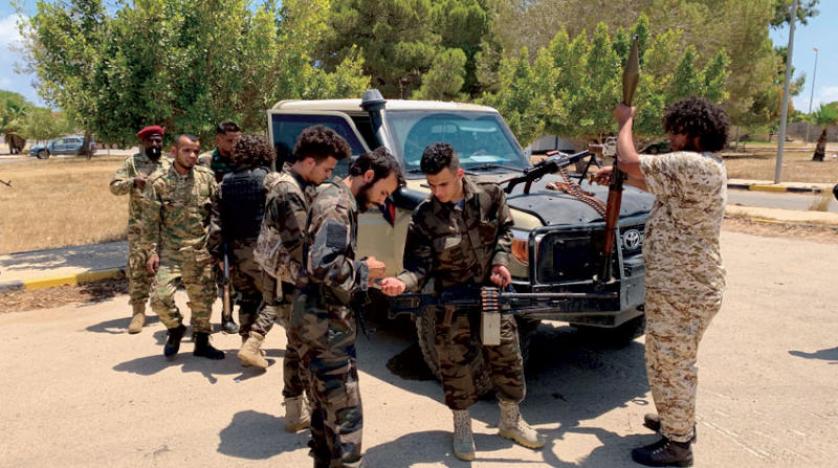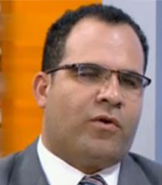After deescalating issues of crisis, it appears that a new phase of settlements is taking shape across the region in Libya, Syria and Yemen. Although the resumption of truce in Yemen between the legitimate government and the Houthis has stalled, the ongoing Omani-mediated talks may lead to the possibility of a peace settlement. Indeed, there are reports of a forthcoming meeting on 10 March in Geneva between the Yemeni parties to address the resolution of conflict.
In Libya, UN envoy Abdullah Batelli’s recent briefing to the Security Council (27 February 2023) moved stagnant waters in Libya’s political landscape, prompting the House of Representatives and the state to agree to adopt the thirteenth constitutional amendment as reference for the electoral process.
In Syria, the earthquake on 6 February caused a relative political breakthrough for the regime, as talks of a rapprochement with Turkey could potentially reshape the political equation, given Ankara’s relationship with the Syrian opposition.
Thus, the common denominator of the three situations is the move in the direction of political settlement to accommodate all parties to the conflict. Indeed, after exhausting avenues of armed conflict, opposing parties came to realize a military equilibrium whereby defense forces on either side were counterbalanced to a point where neither end could increase influence and expansion.
Over the past three years, the Houthi militia in Yemen have been unable to penetrate the Marib front dominated by the national army, although the militia regards the Marib front as a strategic source of wealth because of its oil and gas reserves. In contrast, the national army was unable to recover the capital and militia-dominated areas of influence.
In parallel, the Syrian regime and Kurdish opposition also continue to maintain the same spheres of influence over the past three years since the de-escalation agreement in Sochi in September 2018. In Libya, the parties maintain the ceasefire agreement, whereby the national army relinquished power in the East in exchange for gaining power over armed factions in the West.
Several motives
There are a number of drivers contributing to a shift from de-escalation to settlements, which include:
- External influence engaged in regional crises: the Russian-Ukrainian war played a role in changing the priorities of rival international forces engaged in conflicts. The US has increased its political engagement in regional crises in an attempt to undermine Russian penetration, which has extended through the presence of the Wagner Group in Libya.
In contrast, Russia has entered the Yemeni crisis with greater force than in the past, and this is likely to serve as a catalyst for the US to push towards a settlement in parallel with increased Western efforts to curb Iranian arms smuggling into Yemen. Combined, these efforts could pressure the Houthi militia to sit at the negotiating table. However, Russia maintains its priority to supports peace and not fuel conflict during the current stage.
- A shift towards power-sharing: There is growing talk of national reconciliation in Libya. Opening channels of communication between the main authorities and armed factions is a step towards military reunification, which narrows the gap between the House and the state in the course of the electoral process.
In Yemen, growing convergence between parties to the crisis, and the forthcoming Geneva meeting represents a qualitative shift in the relationship between the recognized government and the Houthis. The militia did not participate in the Gulf Cooperation Council negotiations (April 2022), despite the invitation, and the meetings in Jordan mediated by the UN Mission did not yield any tangible results. There is therefore hope that the Geneva meeting will lead to a breakthrough.
- An inability to settle conflict through force: As noted above, parties to the conflicts retain vying military capacities and strongholds on spheres of influence. Therefore, neither side has been able to gain ground and resolve conflict through military force. With no military upper hand, all parties have reached the stage of exhaustion in the conflict, and have thus begun to turn to negotiations as an alternative. For example, the Houthi militia has not been able to control Marib’s oil and gas resources, but is seeking, through negotiation, some economic returns.
- Worsening humanitarian conditions: Worsening humanitarian conditions is one of the headlines behind which international mediators have entered the scene, although several donors have established conditionalities for their continued support. It is important to note that international powers have had to juggle priorities across different crises, particularly the war in Ukraine, the crisis in Yemen, and conflict in Syria. Meanwhile in Libya, there is a greater focus on human rights given that Libya has no need for economic support given its oil reserves.
Potential challenges
Although the conditions stated above serve to push towards opportunities for settlement, there are equally corresponding challenges, most notably:
- Repercussions of ongoing global rivalry: Rivalry between global powers, namely between the US and Russia, has had a negative impact on crisis resolution. Although both the US and Russia are engaged in the region with the objective to resolve conflict, their interests and approaches are clearly different. For example, Moscow is seeking a clear plan of action in Libya that does not exclude any party from the electoral process (including elements of the former regime), and can fall back on its veto in the Security Council if Batelli’s proposals do not meet the conditions of non-exclusion.
In Yemen, there are fears that the political crisis will polarize global powers. In Syria, rivalry may be even more fierce given that both Russians and Americans have military bases on the ground.
- Pressured for time: The course of settlement is slow-paced despite growing motivations for conflict resolution, especially with regard to local power positions. In Libya, the dispute was settled by a return to constitutional rule, but the continuation of major shifts in the landscape requires the settlement of other outstanding concerns that could prolong the crisis, such as those of the executive branch and sovereign positions. In Yemen, secondary issues were still being discussed, and it remains unlikely that these issues would serve as a gateway to addressing key disputes.
- Vying interests in the outcomes of settlement: the Syrian regime and the legitimate government of Yemen are betting on the assimilation of other powers as a political partner, rather than as part of a power-sharing process. This runs contrary to that of other parties, who focus on a sharing process that goes beyond partnership.
In other words, settlements will not restore the status quo that existed prior to the break out of crisis. Also, it would be presumptuous to assume that reaching a political agreement will lead to stability, especially since there are precedents for political agreements that have not entered into force.
A long way to go
Finally, it can be said that the current interactions in conflict and crisis indicate variables that may enhance settlement pathways as the rules for engagement by international and domestic diplomacy change, and as continuing armed conflicts becomes more and more difficult. This does not necessarily mean that the manifestations of conflict will end altogether. The Israeli-Iranian escalation in the Syrian arena is likely to continue as its root causes remain, and the presence of foreign powers and mercenaries in Libya fuels the instruments of conflict. Sustainable or long-term conflict resolution is likely take a long, and multi-phased path.


